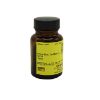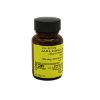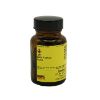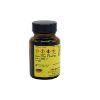- Prepmaster™ Specimen Preparation Robot
- TEM Grids
- TEM Window Grids
- Omniprobe Nanomanipulation Systems
- K-kit Wet "Liquid" TEM Kit
- Specimen Mounts
- SEM Specimen Holders
- Index and Finder SEM Grids
- SEM for Forensics
- SEM Sample Preparation Station Materials
- Cryogenic Personal Protection Equipment
- Cryo Dewars & Flasks
- Cryogenic Grids & Accessories
- Cryogenic Vials & Racks
- Cooling Chambers & Ice Baths
- Prepmaster™ Specimen Preparation Robot
- Laboratory Microwave Ovens
- LYNX II Automated Tissue Processor
- EMS Poly III
- Microtomes
- Tissue Slicers
- Rapid Immersion Freezer
- Heaters & Chillers
- SEM Cooling Stage
- Glow Discharge Systems
- Sputter Coaters & Carbon Coaters
- Stages
- Freeze Dryers
- Critical Point Dryers
- Cryo-SEM Preparation System
- Specimen Transfer Systems
- Decontaminators
- Desiccators
- Centrifuges
- Dry Baths
- Stirrers, Hot Plates
- Vortexers & Magnetic Mixers
- Rotators & Rockers
- Ovens & Incubators
- Vibration Isolation
- Air Sampling
- Vacuum Pumps
Filters
Filter by attributes
- Hazard
Filter by supplier
Dyes & Stains
We now offer a complete line of prepared, ready-to-use, high quality staining solutions for all standard staining procedures used by the Biological Staining Commission and the Armed Forces Institute of Pathology.
- All solutions and concentrations are packaged and prepared in convenient and precise quantities.
- Premixed ready-to-use; saves you time and effort
- Consistently uniform results are obtained
For a partial list of all of our stains, please see the Stains Chart and for descriptions of the stains, see chemicals section.
Technical Tips
Sort by
Product Name
Ordering Info
Acid Fuchsin, Certified, C.N. #DcR-11
This tweezer set offers you a safe place to store your valuable and delicate tweezers.
| Storage | Cat # | Description | MSDS | Pack | Price | Quote | Quantity | |
|---|---|---|---|---|---|---|---|---|
| Storage:RT | Cat #: 10035 | Description: Acid Fuchsin, Certified | MSDS | Pack: 25 g | Price: $41.50 |
Add to Quote:

|
|
Acridine Orange
Ultrastructural probes on DNA templates within human bone marrow and lymph node cells. Used to detect changes in DNA template
| Storage | Cat # | Description | MSDS | Pack | Price | Quote | Quantity | |
|---|---|---|---|---|---|---|---|---|
| Storage:RT | Cat #: 10050 | Description: Acridine Orange | MSDS | Pack: 25 g | Price: $128.50 |
Add to Quote:

|
|
| Storage | Cat # | Description | MSDS | Pack | Price | Quote | Quantity | |
|---|---|---|---|---|---|---|---|---|
| Storage:RT | Cat #: 10350 | Description: Alcian Blue 8GX, Certified | MSDS | Pack: 25 g | Price: $270.50 |
Add to Quote:

|
|
Alizarin Red S, Certified, C.N. #DcAr-9
Certified for Staining Bone. Stain for nervous tissue in small invertebrates, and for sections of nervous tissue. Use to differentiate bone from cartilage in mammalian embryos; used with Toluidine Blue.
| Storage | Cat # | Description | MSDS | Pack | Price | Quote | Quantity | |
|---|---|---|---|---|---|---|---|---|
| Storage:RT | Cat #: 10360 | Description: Alizarin Red, Certified | MSDS | Pack: 25 g | Price: $54.00 |
Add to Quote:

|
|
Aniline Blue, Water Soluble, C.N. #DcK-13
Used with biebrich scarlet for staining collagen, reticulum, muscle, plasma, and nuclei. All connective tissues. Used as a counterstain with red nuclear dye.
| Storage | Cat # | Description | MSDS | Pack | Price | Quote | Quantity | |
|---|---|---|---|---|---|---|---|---|
| Storage:RT | Cat #: 10840 | Description: Aniline Blue, Certified | MSDS | Pack: 25 g | Price: $31.50 |
Add to Quote:

|
|
Auramine O, Certified, C.N. #DcAu-4
Used for staining paraffin sections of infected tissue. Acid-fast organisms exhibit fluorescence.
| Storage | Cat # | Description | MSDS | Pack | Price | Quote | Quantity | |
|---|---|---|---|---|---|---|---|---|
| Storage:RT | Cat #: 10850 | Description: Auramine O, Certified | MSDS | Pack: 25 g | Price: $91.00 |
Add to Quote:

|
|
Azocarmine G
For research only. Alpha, beta, and all D-cells of the islets of Langerhans and in all animals. Not meant for drug, food or household use.
| Storage | Cat # | Description | MSDS | Pack | Price | Quote | Quantity | |
|---|---|---|---|---|---|---|---|---|
| Storage:RT | Cat #: 11150 | Description: Azocarmine G, Certified | MSDS | Pack: 5 g | Price: $32.00 |
Add to Quote:

|
|
| Storage | Cat # | Description | MSDS | Pack | Price | Quote | Quantity | |
|---|---|---|---|---|---|---|---|---|
| Storage:RT | Cat #: 11240 | Description: Azur A, Certified | MSDS | Pack: 10 g | Price: $93.50 |
Add to Quote:

|
|
Azur B (Azur I; Methylene Azur B)
Important component of Giemsa's stain for blood protozoa. Used for staining semi-thin sections of plant tissue. Polychromatic stains for thin sections.
| Storage | Cat # | Description | MSDS | Pack | Price | Quote | Quantity | |
|---|---|---|---|---|---|---|---|---|
| Storage:RT | Cat #: 11200 | Description: Azur B, Certified | MSDS | Pack: 10 g | Price: $68.00 |
Add to Quote:

|
|
| Storage | Cat # | Description | MSDS | Pack | Price | Quote | Quantity | |
|---|---|---|---|---|---|---|---|---|
| Storage:RT | Cat #: 11210 | Description: Azur Ii, Certified | MSDS | Pack: 10 g | Price: $74.00 |
Add to Quote:

|
|
Azur II Eosin
Water-soluble; Alcohol-slightly soluble. An important component of Giemsa's stain for blood protozoa. Used for staining semi-thin sections of plant tissue.
| Storage | Cat # | Description | MSDS | Pack | Price | Quote | Quantity | |
|---|---|---|---|---|---|---|---|---|
| Storage:RT | Cat #: 11220 | Description: Azur Ii Eosin | MSDS | Pack: 10 g | Price: $0.00 |
Add to Quote:

|
|
Basic Fuchsin, Certified, C.N. #DcFb-39
Stain for epoxy-embedded tissuue. Gram positive/negative bacteria. A pituitary stain.
| Storage | Cat # | Description | MSDS | Pack | Price | Quote | Quantity | |
|---|---|---|---|---|---|---|---|---|
| Storage:RT | Cat #: 11260 | Description: Basic Fuchsin, Certified | MSDS | Pack: 25 g | Price: $42.50 |
Add to Quote:

|
|
Basic Green 4, Certified, C.N. #DcMg-11
Used as bacteria stain and counterstain for botanical material.
| Storage | Cat # | Description | MSDS | Pack | Price | Quote | Quantity | |
|---|---|---|---|---|---|---|---|---|
| Storage:RT | Cat #: 18100 | Description: Malachite Green 4, Certified C.N.#DcMg-11 | MSDS | Pack: 25 g | Price: $49.00 |
Add to Quote:

|
|
Biebrich Scarlet
Used with picric acid/aniline blue for staining collagen, recticulum, muscle, and plasma. Also Luna's method for erythrocytes & eosinophil granules and Guard's method for sex chromatin and nuclear chromatin.
| Storage | Cat # | Description | MSDS | Pack | Price | Quote | Quantity | |
|---|---|---|---|---|---|---|---|---|
| Storage:RT | Cat #: 11265 | Description: Biebrich Scarlet | MSDS | Pack: 25 g | Price: $37.00 |
Add to Quote:

|
|
Bismarck Brown Y
PAP for staining smears. Nuclei & granules. Mucin & calciform cells of intestine, cartilage & embryo.
| Storage | Cat # | Description | MSDS | Pack | Price | Quote | Quantity | |
|---|---|---|---|---|---|---|---|---|
| Storage:RT | Cat #: 11310 | Description: Bismark Brown Y, Certified - SALE | MSDS | Pack: 25 g | Price: $38.00 |
Add to Quote:

|
|
Brilliant Cresyl Blue, Certified, C.N.#DcV-5
Platelets & reticulum of immature red cells. Counterstained with Wright's stain.
| Storage | Cat # | Description | MSDS | Pack | Price | Quote | Quantity | |
|---|---|---|---|---|---|---|---|---|
| Storage:RT | Cat #: 11465 | Description: Brilliant Cresyl Blue, Certified | MSDS | Pack: 10 g | Price: $60.50 |
Add to Quote:

|
|
Bromophenol Blue, Reagent, A.C.S.
3',3",5 '5"-Tetrabromophenol-sulfonthalein, F.W. 669.97 CAS #115-39-9
| Cat # | Description | MSDS | Pack | Price | Quote | Quantity | |
|---|---|---|---|---|---|---|---|
| Cat #: 11470 | Description: Bromophenol Blue | MSDS | Pack: 5 g | Price: $29.50 |
Add to Quote:

|
|
|
| Cat #: 11471 | Description: Bromophenol Blue | MSDS | Pack: 25 g | Price: $103.00 |
Add to Quote:

|
|
| Storage | Cat # | Description | MSDS | Pack | Price | Quote | Quantity | |
|---|---|---|---|---|---|---|---|---|
| Storage:RT | Cat #: 12410 | Description: Carmine, Certified | MSDS | Pack: 10 g | Price: $41.50 |
Add to Quote:

|
|
Cresyl Fast Violet, Certified, C.N.#DcW-9
Vogt's method for nerve cells. A neurological tissue stain. Nissl substance & PAS-positive material. Powers & Clark method for spinal cord and brain with formalin or Bouins fixed.
| Storage | Cat # | Description | MSDS | Pack | Price | Quote | Quantity | |
|---|---|---|---|---|---|---|---|---|
| Storage:RT | Cat #: 12780 | Description: Cresyl Fast Violet, Certified | MSDS | Pack: 5 g | Price: $100.50 |
Add to Quote:

|
|
Crystal Violet, Certified, C.N.# DcC-68
For Gram positive/Gram negative bacteria, filaments, Holzer's method for glial fibers, Amyloid in human tissue and chromatin and nucleoli in plant tissue.
| Storage | Cat # | Description | MSDS | Pack | Price | Quote | Quantity | |
|---|---|---|---|---|---|---|---|---|
| Storage:RT | Cat #: 12785 | Description: Crystal Violet, Certified | MSDS | Pack: 25 g | Price: $25.50 |
Add to Quote:

|
|




